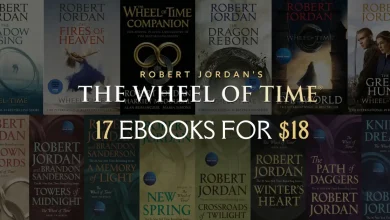
We independently review all recommendations. Purchases made through our links may earn us an affiliate commission. Here’s how it works.
Why Aren’t White eReaders More Common?
Ever noticed that nearly every eReader on the market is black or some shade of dark gray? Turns out, about 80% of eReaders stick to these colors, even though plenty of people would love a white option. So, what’s up with that? Let’s break down why white eReaders are so rare and explore the few exceptions that exist.
Why Are White eReaders So Hard to Find?
Once upon a time, white eReaders were way more common. Early Kindle models, for example, came in white, but over time, Amazon shifted to black bezels across most of its lineup. Even the Kindle Scribe, which leans toward a lighter design, isn’t fully white—it mixes in colors like tungsten and jade.
Kobo is one of the few brands keeping white eReaders alive. Their Kobo Libra Colour has been pretty popular, but out of five Kobo models, it’s the only one rocking a white frame. And if you check out PocketBook’s entire lineup, you won’t find a single white device. Clearly, white eReaders are more of a rarity than the norm.
Interestingly, white is a bit more common in eNote devices. The Boox Note Max and Boox Go 10.3, for example, are only available in white. The same goes for Remarkable tablets, which feature light gray casings designed to blend seamlessly with their E Ink displays.
Why Did eReaders Go Dark?
Back in the day, before front-lit eReaders existed, black bezels were the better option because they created an illusion of better contrast, making text appear darker. When frontlights came along, the need for black frames mostly disappeared, since the lighting made the background appear whiter and more paper-like. But despite this shift, the industry has largely stuck with black devices.
Practical Issues with White eReaders
One reason manufacturers avoid white eReaders? White plastic is more expensive to produce and has a tendency to show stains, discoloration, and wear over time. Some users also claim white bezels make screen imperfections more obvious, though others love the clean, minimal look. It’s a divisive issue—some find white frames soothing, while others prefer dark bezels to minimize distractions.
Do Consumers Even Want White eReaders?
The debate between black and white eReaders is surprisingly polarizing. Some people love the refreshing, modern look of white devices, while others prefer black for durability and aesthetics. But with the Kobo Libra Colour performing well, there’s a real possibility manufacturers might start offering more variety. If you’re interested in how color choices could impact the future of eReaders, innovations like TCL’s NxtPaper 4.0 could be worth keeping an eye on.
At the end of the day, it’s clear there’s room for more color diversity in the eReader space. Whether brands will take that step is still up in the air, but one thing’s for sure—there’s demand for something beyond the standard black and gray.




